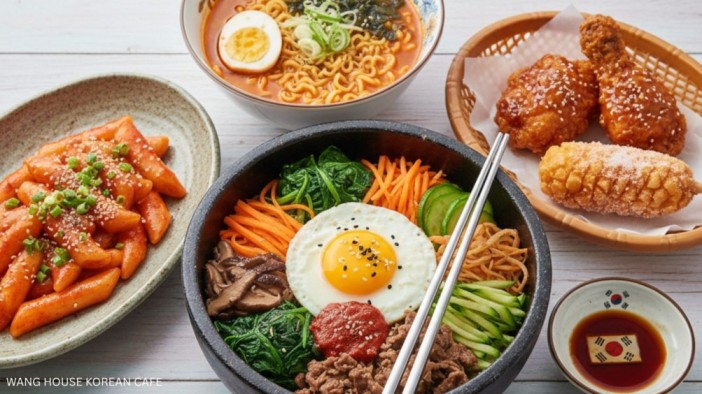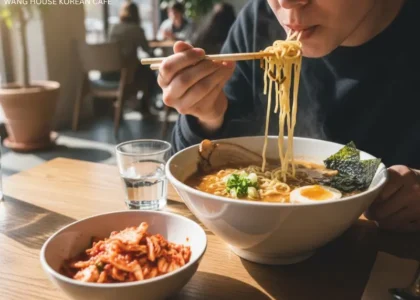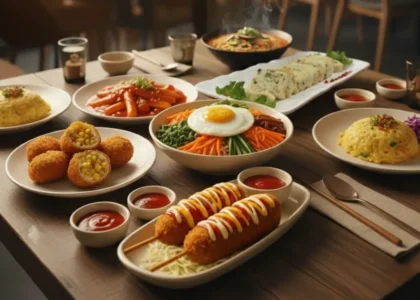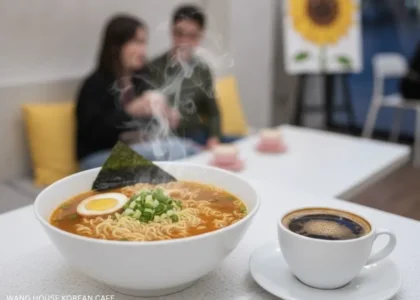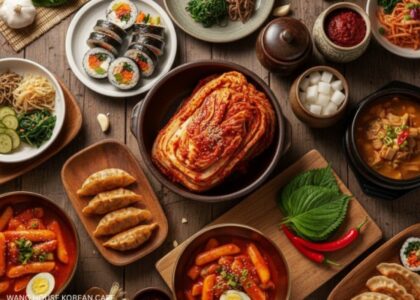Korean Regional Food is more than just a meal; it is a cultural journey that highlights the history, traditions, and flavors of different cities in Korea. From the rich culinary heritage of Jeonju to the bustling food streets of Busan, every region offers dishes that tell a story. For food lovers in India, discovering these local specialties is now easier, thanks to authentic Korean cafes like Wang House.
For those eager to dive deeper, check out our step-by-step recipes for popular Korean dishes to try at home.
The Heart of Jeonju Korean Cuisine
Jeonju is often called the food capital of Korea. Its most famous dish is Bibimbap, a colorful rice bowl topped with vegetables, egg, and meat. At Wang House, you can taste the Veg Bibimbap or Chicken Bibimbap, both inspired by Jeonju’s tradition. These bowls are filling, nutritious, and balanced, making them perfect for anyone who wants to explore Jeonju Korean cuisine without leaving India.
Another favorite from Jeonju is the Vegetable Pancake (Pa Jeon), a crispy and savory snack. It is best enjoyed with dipping sauces and pairs well with soups like Miyeok Soup or Kimchi Soup. These dishes reflect Jeonju’s love for hearty, homestyle meals.
Exploring Seoul’s Traditional Dishes
Seoul, the capital city, is known for its vibrant food culture. Seoul’s traditional dishes are often linked with royal courts and everyday street markets. One highlight is Tteokbokki, chewy rice cakes cooked in spicy sauces. At Wang House, you can try both Veg Tteokbokki and Chicken Tteokbokki, giving you a true taste of Seoul’s favorite comfort food.
Seoul is also famous for Mandu, Korean dumplings. Both Kimchi Mandu and Chicken Mandu at Wang House echo the flavors found in Seoul’s bustling food stalls. Pair them with a hot bowl of Kimchi Mandu Soup or Chicken Mandu Soup to complete the experience.
The Bold Flavors of Busan Street Food
Busan is a seaside city with a lively street food culture. Busan street food is popular for bold flavors, crispy textures, and hearty snacks. One of the most loved snacks is the Cheese Corn Dog, often enjoyed as a quick bite. At Wang House, you can also enjoy Cheese Corn Korokke, Fries, and the Chicken Hot Dog, all inspired by Busan’s markets.
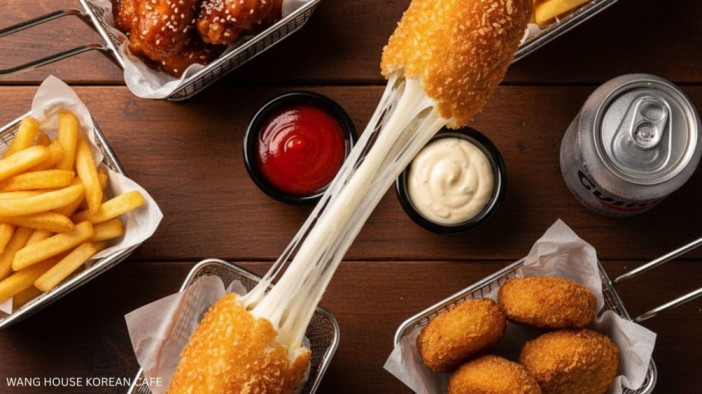
Seafood influences Busan’s food, but street favorites like Fried Chicken Wings (Dak-Twigim), Crispy Boneless Fried Chicken, and Fried Chicken Leg (Yangnyeom Chicken) stand out as local specialties. These snacks bring the lively energy of Busan right to your table.
Korean street food has deep roots — here’s why Korean Street Food’s a Must-Try for Food Lovers.
Ramen Across Korean Regions
Ramen is not originally Korean, but it has become part of regional Korean food identity. Regional versions are often spiced differently or paired with local side dishes. Wang House offers a selection of ramen that captures this variety:
- Spicy Ramen – Veg
- Kimchi Ramen – Veg
- Hot & Spicy Chicken Ramen
For those who want a complete meal, combo sets like Ramen with Mandu and Soft Drink or Ramen with Veg Mini Gimbap provide the perfect balance. These meals represent how ramen adapts across Korea while staying comforting and flavorful.
To understand how ramen became a Korean staple, read How Korean Ramen Evolved and Achieved Global Fame.
Rabokki and Fusion Flavors
Rabokki, a mix of rice cakes and ramen, is another street favorite found in many Korean regions. It combines chewy textures with spicy broth, creating a rich and filling dish. At Wang House, you can try both Veg Rabokki and Chicken Rabokki. These dishes showcase how modern Korea blends tradition with fusion, making food fun and exciting.
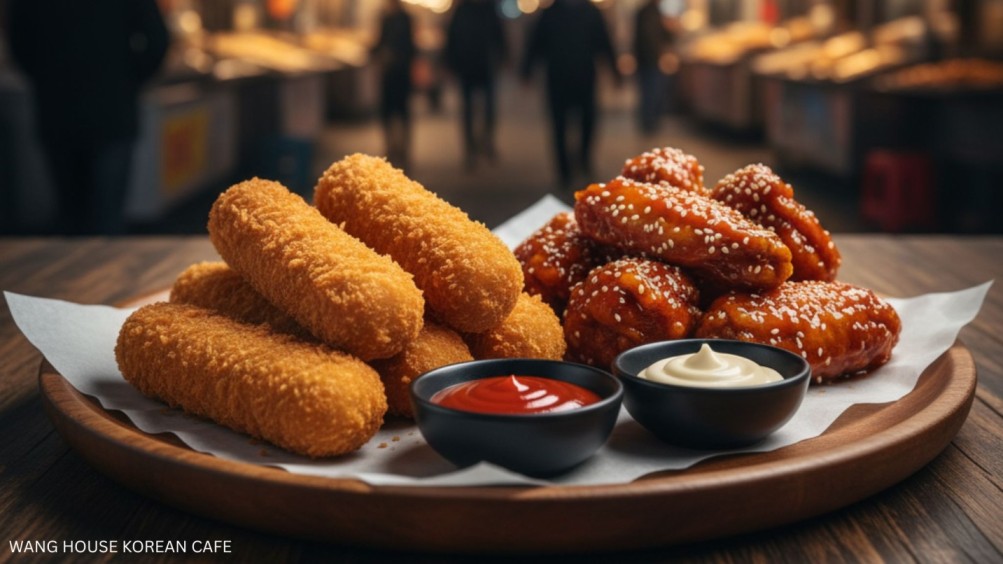
Rice and Soup Culture in Korean Regional Food
Rice and soup are cornerstones of local Korean food specialties. From plain Steamed Sticky Rice to flavored options like Kimchi Fried Rice or Egg Fried Rice with Potato Soup, these dishes are simple but essential. Soups such as Chicken Soup, Kimchi Soup, and Miyeok Soup are served daily in homes across Korea, especially during celebrations or family meals.
These dishes highlight the comfort side of Korean food culture, making them perfect for anyone who wants to try traditional Korean regional recipes in India.
The Role of Snacks in Local Korean Food Specialties
Snacks are central to Korean street culture. From Seoul to Busan, people enjoy light bites that are both satisfying and portable. At Wang House, snack lovers can choose from:
- Korean Style Egg Roll
- Egg Mini Gimbap Platter
- Chicken Mini Gimbap Platter
- Veg Mini Gimbap Platter
These snacks reflect authentic Korean food from different regions. Whether it’s the roll-style gimbap or crispy korokke, each dish gives you a window into everyday Korean life.
Want to explore gimbap varieties in India and beyond? Visit Best Korean Gimbap Varieties: Guide to Gimbap in India.
Bringing Authentic Korean Food from Different Regions to India
For Indian foodies, tasting authentic regional Korean food from different regions no longer requires international travel. Cafes like Wang House make it possible to experience Bibimbap from Jeonju, Mandu from Seoul, and Busan street food under one roof. Their menu recreates the regional flavors with care while making them approachable for Indian palates.
If you are curious to try traditional Korean regional recipes in India, Wang House is a must-visit. With offerings like Kimchi Soup, Omelette Rice, and Kimchi Mandu, the cafe blends authenticity with accessibility.
Why Regional Korean Food Matters
Regional Korean food is not just about eating. It is about discovering culture through taste. Each dish reflects geography, climate, and history. Jeonju focuses on balance, Seoul highlights sophistication, and Busan brings energy. Together, they create a diverse food culture that attracts people worldwide.
By trying local Korean food specialties in India, you also connect with the traditions of Korea. The dishes are more than flavors—they are stories passed down through generations.
Experience Korean Regional Food at Wang House
Wang House Korean Cafe in India is dedicated to sharing the true taste of Korea. Their wide menu features Bibimbap, Mandu, Tteokbokki, Gimbap, Ramen, Rabokki, and many more. From Jeonju to Busan, the cafe brings the charm of regional Korean food closer to Indian customers.
If you are searching for authentic regional Korean food from different regions or want to try traditional Korean regional recipes in India, Wang House is the place to be. It is not just dining; it is an experience of culture, flavor, and warmth.
To better understand our vision and how we bring Korean Regional Food to India, see About Wang House Korean Café – Journey of the Korean Food Taste in India.


